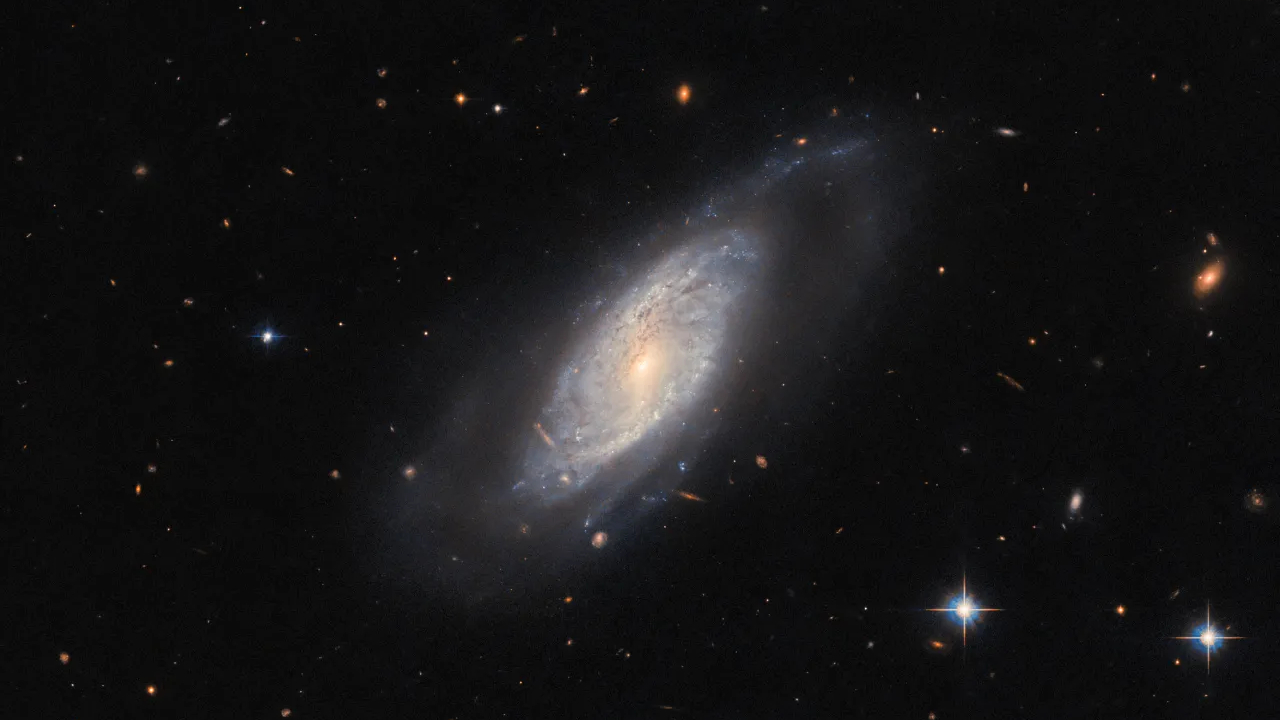
After an awe-filled weekend of the strongest northern lights in 20 years, our aurora fever is slowly dying down — but, if you are searching for an excuse to admire some cosmic marvels once again, this image of a faraway galaxy might be of interest.
Related: The Milky Way galaxy may be a different shape than we thought
What you see above is UGC 9684, a star-forming spiral galaxy that resides roughly 240 million light-years from Earth in the northern sky's Boötes constellation. In the picture, which was released by NASA and the European Space Agency last week, you can see a bar cutting across the heart of the galaxy. Such bars, one of which exists in our own galaxy, can be likened to a funnel, pulling nearby matter into the center a black hole lurks. Galaxies normally grow by merging with other galaxies; the formation of bars, which likely occurs after galaxies "settle," is the last milestone in the evolution of spiral galaxies like UGC 9684.
UGC 9684 is actively birthing new stars every few years, but despite the frequency, even the most massive of its stars run out of fuel and explosively die in just a few million years, astronomers said in a statement.
Such violent stellar deaths, known as supernovas, have erupted in this galaxy four times since 2006, a frequency that makes UGC 9684 among some of the most supernova-rich galaxies we know of. The most recent explosion occurred in the galaxy's outskirts in July 2020, however, astronomers say that particular stellar explosion has since faded from view and thus cannot be seen in this image, which Hubble took last year.
You can also see a whisper of stars surrounding the imaged galaxy as a faint, spherical cloud known as the halo. Our own Milky Way boasts two distinct inner and outer halos; stars found in the former are 11.5 billion years old while those in the latter could be as old as the galaxy itself.
Seeing the faraway galaxy UGC 9684 in this Hubble image, it is mind boggling that the telescope is hovering just above Earth's atmosphere, circling our planet roughly 320 miles (515 kilometers) above the surface. We lost the capability to service the telescope with the retirement of the space shuttle in 2011, but NASA estimates the telescope will operate until at least the late 2020s, after which the space agency plans to facilitate a controlled re-entry of the telescope into the Pacific Ocean.







